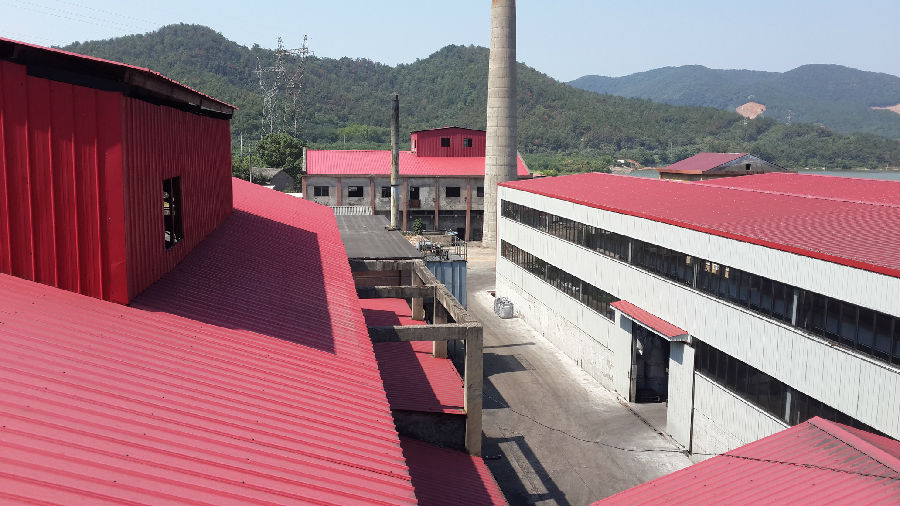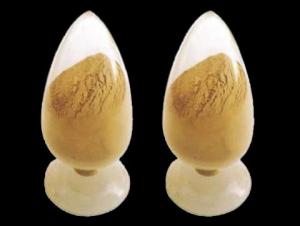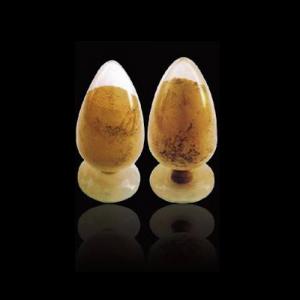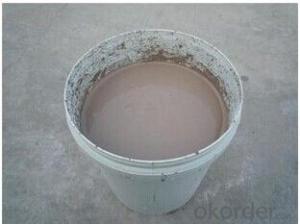Calcined Petroleum Coke 1-3mm FC:98.5%min
- Loading Port:
- Shekou
- Payment Terms:
- TT OR LC
- Min Order Qty:
- 20 m.t
- Supply Capability:
- 1000 m.t/month
OKorder Service Pledge
OKorder Financial Service
You Might Also Like
Factory Background
The factory is majorly running and operating carbon additive (pitch coke, calcined petroleum coke and anthracite), low nitrogen carbon additive, and brake pad making material. Company is the long term supplier of Sinosteel Corporation, Shanghai Carbon Corporation, the plant of SGL Group the Carbon Company in China and some largest special carbon products producing plants.
YUAI also supplies huge amout of high quality carbon additive and graphite carbon additive to steel plants, foundries and ferrotungsten plants. YUAI has been assigned by BAO STEEL as the only organization for processing pitch coke for export purpose. The group’s major products are constantly exported to Japan, Korea, Malaysia, South East Asia countries, Europe and America, which receive praises by our consumers.
The group has invested numbers of calcinators in Anhui China to ensure the capability of producing and processing huge amount of carbon additive. Further investment is on process. According to the orders from customers, YUAI is able to processing and providing different specifications of carbon additive and other products. To provide best quality of products and to offer customers most satisfied service is YUAI’s operating objectives.
Calcined Petroleum Coke
FC:98.5%min,
S:0.5%max
A:0.8%max
V:0.7%max
Mositure:0.5%max
Size:1-5mm
This product is mainly used in steel-making and foundry. Calcined Petroleum Coke
Calcined Petroleum Coke comes from delayed coke which extracted from oil refinery. Although Calcined Petroleum Coke contains a little bit higher level of sulfur and nitrogen than pitch coke, the price advantage still makes it widely used during steel-making and founding as a kind of carbon additive/carburant.
Packaging & Delivery
Packaging Detail:25kg paper bag into 1t weaving bag 5kg, 10kg and 20kg weaving bag into 1t weaving bag 25kg weaving bag put on pallet covered with entanglement wrap product direct into packing bag 25kg paper bag put on pallet covered with entanglement Wrap 25kg weaving bag into 1t weaving bag.
Delivery Details: 7 days


- Q:What are monolithic refractories and how are they different from other refractory materials?
- Monolithic refractories, unlike bricks or tiles, are refractory materials that are not pre-formed into specific shapes or sizes. Instead, they are composed of a mixture of aggregates, binders, and additives, which are then installed and cured to create a solid and dense structure. One notable difference between monolithic refractories and other refractory materials is their versatility and ease of installation. While traditional bricks or tiles require skilled labor and careful assembly, monolithic refractories can be poured, sprayed, or gunned into place, allowing for a faster and more efficient installation process. This makes them particularly suitable for complex shapes or hard-to-reach areas. Another distinction lies in the physical properties of monolithic refractories. Unlike bricks and tiles, which are known for their mechanical strength and resistance to thermal shock, monolithic refractories can be customized to exhibit a wide range of properties. Depending on the specific application requirements, they can be engineered to have excellent thermal insulation, superior corrosion resistance, or enhanced abrasion resistance. This adaptability makes monolithic refractories suitable for various industries, including steel, cement, glass, and petrochemical. Furthermore, monolithic refractories have the advantage of being able to expand and contract with temperature changes, unlike rigid brick structures. This thermal flexibility helps prevent cracking and damage caused by thermal cycling, thus prolonging the lifespan of the refractory lining. Additionally, monolithic refractories offer better refractory integrity and reduced joint failure since they do not have seams or weak points that are susceptible to thermal stresses. In conclusion, monolithic refractories are a versatile and convenient type of refractory material that can be tailored to meet specific application requirements. Their easy installation, thermal flexibility, and customizable properties distinguish them from other refractory materials like bricks or tiles.
- Q:How do monolithic refractories improve the efficiency of ladle and tundish lining systems?
- Monolithic refractories improve the efficiency of ladle and tundish lining systems by providing superior thermal insulation, excellent resistance to thermal shock, and higher mechanical strength compared to traditional brick or castable linings. This results in reduced heat loss, improved temperature control, and increased refractory life, ultimately leading to higher productivity and cost savings in steelmaking operations.
- Q:What are the challenges in using monolithic refractories in the iron and steel industry?
- The iron and steel industry faces significant challenges when it comes to using monolithic refractories. One of these challenges is the fact that monolithic refractories are more prone to thermal shock compared to traditional brick refractories. Unlike brick refractories, which are made from multiple materials and have strong structural integrity, monolithic refractories are made from a single material, which makes them more susceptible to cracking and failure when exposed to rapid changes in temperature. Another challenge lies in achieving consistent and uniform application of monolithic refractories. While brick refractories can be precisely shaped and fitted into specific areas, monolithic refractories are typically applied as a mortar-like mixture that is poured or sprayed into place. This process is more complex and requires skilled operators to ensure proper application and adhesion. Additionally, monolithic refractories have a shorter lifespan compared to brick refractories. They are more vulnerable to erosion and wear, especially in high-temperature environments and when exposed to harsh chemicals and slag. This means that regular maintenance and replacement of monolithic refractories are necessary, leading to increased downtime and costs for the iron and steel industry. Furthermore, selecting and customizing monolithic refractories can be challenging. The iron and steel industry has diverse operating conditions and requirements, making it difficult to find the right monolithic refractory composition and design that can withstand the specific demands of each application. Factors such as temperature, chemical composition, and mechanical stress must be carefully considered. In conclusion, although monolithic refractories offer advantages such as easy installation and versatility, their susceptibility to thermal shock, difficulty in achieving uniform application, shorter lifespan, and the need for customized selection present challenges for their effective use in the iron and steel industry.
- Q:What are the factors influencing the choice of monolithic refractories for different furnace types?
- The choice of monolithic refractories for different furnace types is influenced by various factors that need to be considered in order to ensure optimal performance and efficiency. These factors include the operating temperature, type of heat transfer mechanism, chemical composition of the furnace atmosphere, thermal cycling, mechanical stresses, and specific application requirements. One of the primary factors to consider is the operating temperature of the furnace. Different monolithic refractories have different temperature limits, and it is crucial to select a refractory material that can withstand the specific temperature range of the furnace without significant degradation or failure. For high-temperature applications, materials like alumina, magnesia, and silica are commonly used due to their excellent thermal stability. The type of heat transfer mechanism is another important consideration. Furnaces can use various methods to transfer heat, such as radiation, conduction, or convection. Each of these mechanisms may require different refractory properties. For example, radiation-dominated furnaces may require a refractory material with high thermal conductivity to efficiently transfer heat, while convection-dominated furnaces may require a material with good resistance to gas flow erosion. The chemical composition of the furnace atmosphere is also a crucial factor. Depending on the process being carried out in the furnace, the atmosphere may contain highly corrosive gases or chemicals. In such cases, it is essential to select a monolithic refractory that is resistant to chemical attack and can maintain its structural integrity in the presence of aggressive substances. Thermal cycling, which involves repeated heating and cooling cycles, is another factor influencing the choice of monolithic refractories. Some refractory materials may be prone to thermal shock or spalling when subjected to rapid temperature changes. In contrast, others may have better resistance to thermal cycling, making them more suitable for applications that involve frequent temperature variations. Mechanical stresses, such as load or vibration, can also impact the choice of refractories. Furnaces that experience mechanical stresses require materials with good mechanical strength and resistance to abrasion. Refractory materials like silicon carbide or zirconia may be preferred in such cases due to their high strength and toughness. Lastly, specific application requirements should be considered when selecting monolithic refractories. Factors such as installation method, ease of maintenance, availability, and cost-effectiveness may influence the choice of refractory material. In summary, the choice of monolithic refractories for different furnace types is influenced by the operating temperature, heat transfer mechanism, chemical composition of the furnace atmosphere, thermal cycling, mechanical stresses, and specific application requirements. Considering these factors is essential to ensure the longevity, performance, and efficiency of the refractory lining in various furnace applications.
- Q:How do monolithic refractories withstand the mechanical impacts in ladle lip applications?
- The unique properties and composition of monolithic refractories enable them to endure mechanical impacts in ladle lip applications. Firstly, their structural integrity is reinforced by being made from a single, uniform material, making them less prone to cracking or breaking when subjected to mechanical forces. Additionally, the inclusion of additives such as fibers or aggregates enhances their resistance to mechanical stresses by distributing the applied forces and reducing stress concentration points. Furthermore, the seamless application process ensures a uniform distribution of impacts and eliminates weak points or joints that could be susceptible to mechanical damage. Moreover, monolithic refractories can be customized with specific compositions and formulations to withstand mechanical impacts, utilizing various binders and additives to enhance toughness, impact resistance, and overall mechanical strength. Finally, the selection of monolithic refractories for ladle lip applications takes into account operating conditions like temperature and chemical exposure to optimize their mechanical properties for the specific challenges posed by ladle lip applications. In conclusion, the homogenous structure, additive inclusion, seamless application process, and customizable composition of monolithic refractories contribute to their ability to withstand mechanical impacts in ladle lip applications, ensuring their durability and effectiveness.
- Q:How do monolithic refractories improve the efficiency of ladle and tundish preheating stations?
- Monolithic refractories play a crucial role in enhancing the efficiency of ladle and tundish preheating stations. These refractories are specifically designed to withstand high temperatures and thermal shocks, making them ideal for use in preheating applications. One key way in which monolithic refractories improve efficiency is by providing excellent heat insulation. These refractories have low thermal conductivity, meaning they minimize heat loss from the preheating station to the surroundings. As a result, more heat is retained within the ladle or tundish preheating station, leading to faster and more efficient heating of the vessel. Additionally, monolithic refractories offer superior heat retention properties. Once heated, these refractories have the ability to store and release heat gradually over time. This characteristic allows for a more consistent and controlled heating process in the ladle or tundish preheating station. By maintaining a stable temperature, the refractories ensure that the vessel is heated uniformly and prevent thermal shocks that could lead to cracking or other damage. Furthermore, monolithic refractories have excellent resistance to chemical reactions and erosion caused by molten metals and slag. Ladles and tundishes are often exposed to corrosive environments, and the use of monolithic refractories helps to protect against degradation and extend the lifespan of the preheating station. This durability reduces the need for frequent maintenance and replacement, leading to cost savings and improved overall efficiency. In summary, monolithic refractories improve the efficiency of ladle and tundish preheating stations by providing excellent heat insulation, heat retention, and resistance to chemical reactions. These properties result in faster and more uniform heating, reduced heat loss, and increased durability of the preheating station. Ultimately, these benefits contribute to improved productivity and cost-effectiveness in the steelmaking process.
- Q:How do monolithic refractories contribute to reducing emissions in iron and steel processes?
- The reduction of emissions in iron and steel processes is greatly aided by the use of monolithic refractories, which offer a more efficient and sustainable lining solution compared to traditional brick refractories. To begin with, monolithic refractories possess a homogeneous structure that allows for easier installation and repair. This characteristic reduces the amount of time needed for maintenance, ultimately leading to increased productivity and decreased emissions. In contrast, brick refractories require more labor-intensive and time-consuming procedures for installation and repair, resulting in longer shutdown periods and higher emissions. Additionally, monolithic refractories demonstrate superior thermal insulation properties. By minimizing heat loss from furnaces or kilns, they enhance energy efficiency and decrease the amount of fuel required to reach the desired temperature. This reduction in fuel consumption directly translates into lower emissions of greenhouse gases, such as carbon dioxide, which contributes to the overall environmental sustainability of iron and steel processes. Furthermore, monolithic refractories possess excellent resistance to both thermal and chemical wear, thereby enhancing the durability and lifespan of the lining. This increased durability reduces the frequency at which refractories need to be replaced, resulting in reduced waste generation and resource consumption. By extending the service life of the lining, monolithic refractories contribute to the reduction of the environmental impact associated with the production and disposal of refractory materials. Moreover, monolithic refractories can be formulated with specialized compositions and additives to improve their resistance to corrosion and erosion, which are common challenges in iron and steel processes. By minimizing the wear and tear on the refractory lining, they help maintain the integrity of furnaces and kilns, preventing the leakage of harmful gases and pollutants that would otherwise contribute to emissions. In conclusion, monolithic refractories aid in the reduction of emissions in iron and steel processes through their ease of installation and repair, superior thermal insulation properties, increased durability, and resistance to corrosion and erosion. By optimizing energy efficiency, minimizing downtime, and reducing waste generation, monolithic refractories provide a sustainable solution for the industry, aligning with global efforts to combat climate change and promote environmental stewardship.
- Q:What are the challenges in recycling monolithic refractories?
- There are several challenges in recycling monolithic refractories that make the process more complex compared to other materials. Firstly, monolithic refractories are designed to withstand high temperatures and harsh conditions, making them highly resistant to wear and tear. This durability also poses a challenge in the recycling process, as it requires specialized techniques and equipment to break down and separate the refractory material. Secondly, monolithic refractories often contain various additives and binders, such as clay, cement, and other organic compounds, which can complicate the recycling process. These additives may need to be removed or separated from the refractory material before it can be recycled effectively. Additionally, monolithic refractories can be contaminated with other materials, such as metal oxides, slag, and impurities, during their service life. These contaminants can affect the quality and properties of the recycled refractory material, requiring thorough cleaning and purification processes. Moreover, the logistics involved in collecting and transporting monolithic refractories for recycling can be challenging. Refractories are often used in large quantities in industrial settings, and their removal and transportation can be costly and time-consuming. Furthermore, finding suitable recycling facilities with the necessary equipment and expertise to handle monolithic refractories can be limited, especially in certain regions. Lastly, economic factors play a role in the challenges of recycling monolithic refractories. The cost of recycling and processing the refractories may not always be financially viable compared to using virgin materials. This can discourage companies from investing in recycling programs and contribute to the lower demand for recycled refractory materials. Overall, the challenges in recycling monolithic refractories mainly stem from their durability, complex composition, contamination, logistics, and economic considerations. However, advancements in technology and increased awareness of the environmental benefits of recycling may help overcome these challenges and promote the sustainable reuse of refractory materials.
- Q:What are the considerations for repairing and relining monolithic refractories?
- When repairing and relining monolithic refractories, there are several important factors to take into account. Firstly, it is crucial to evaluate the level of damage or wear on the refractory lining. This can be achieved through visual inspection or non-destructive testing methods like ultrasonic or thermal imaging. By determining the severity and location of the damage, the appropriate repair or relining technique can be selected. Another aspect to consider is the type of monolithic refractory material being used. Different materials have varying properties and performance characteristics, which must be considered when choosing a repair method. For instance, certain materials may require specialized equipment or high-temperature curing during installation. The operational conditions of the refractory lining also play a significant role. Factors such as temperature, chemical exposure, and mechanical stress can impact the performance and durability of the lining. Therefore, it is essential to select a repair or relining method that can withstand these conditions and provide long-lasting protection. Furthermore, the downtime and cost implications of the repair or relining process need to be taken into account. Some methods may involve longer curing or drying times, resulting in extended shutdown periods. It is important to carefully evaluate the benefits of the repair or relining against the potential production losses and expenses associated with the downtime. Lastly, adhering to industry standards and guidelines is of utmost importance when repairing or relining monolithic refractories. This ensures that the repairs are executed correctly and safely, minimizing the risk of future damage or failure. Seeking advice from refractory experts or manufacturers can provide valuable insights and guidance in this regard. To summarize, the considerations for repairing and relining monolithic refractories encompass assessing the extent of damage, understanding the properties of the refractory material, considering the operating conditions, evaluating downtime and cost implications, and following industry standards and guidelines.
- Q:How do monolithic refractories resist high temperatures?
- Monolithic refractories, with their unique composition and structure, are specifically designed to withstand high temperatures. Unlike traditional refractory bricks, which are made up of multiple pieces, these refractories are created from a single material or piece. The primary factor contributing to the high temperature resistance of monolithic refractories is their elevated melting point. Materials such as alumina, silica, and magnesia, which have melting points ranging from 1650°C to 2000°C, are utilized in their production. This characteristic allows the refractories to endure extreme temperatures without experiencing significant deformation or melting. Moreover, monolithic refractories possess exceptional thermal stability. They exhibit low thermal conductivity, enabling them to effectively insulate against heat transfer. As a result, these refractories can maintain their structural integrity even when exposed to rapid temperature changes or thermal shocks. Furthermore, the monolithic nature of these refractories grants them enhanced resistance to thermal stress. Unlike traditional refractory bricks, they lack joints or seams that are susceptible to thermal expansion and contraction. Consequently, they exhibit greater resistance to cracking or spalling when subjected to high temperatures. Additionally, monolithic refractories have the ability to develop a protective layer or slag on their surface when exposed to elevated temperatures. This slag acts as a barrier, preventing direct contact between the refractory material and the hot gases or molten metals. Consequently, the risk of chemical reactions or corrosion is reduced. In conclusion, the combination of high melting point, thermal stability, resistance to thermal stress, and the capacity to form a protective slag makes monolithic refractories highly effective in withstanding high temperatures. They find wide applications in various industries, including steel, cement, glass, and petrochemical, where they encounter extreme heat conditions.
1. Manufacturer Overview |
|
|---|---|
| Location | |
| Year Established | |
| Annual Output Value | |
| Main Markets | |
| Company Certifications | |
2. Manufacturer Certificates |
|
|---|---|
| a) Certification Name | |
| Range | |
| Reference | |
| Validity Period | |
3. Manufacturer Capability |
|
|---|---|
| a)Trade Capacity | |
| Nearest Port | |
| Export Percentage | |
| No.of Employees in Trade Department | |
| Language Spoken: | |
| b)Factory Information | |
| Factory Size: | |
| No. of Production Lines | |
| Contract Manufacturing | |
| Product Price Range | |
Send your message to us
Calcined Petroleum Coke 1-3mm FC:98.5%min
- Loading Port:
- Shekou
- Payment Terms:
- TT OR LC
- Min Order Qty:
- 20 m.t
- Supply Capability:
- 1000 m.t/month
OKorder Service Pledge
OKorder Financial Service
Similar products
New products
Hot products
Related keywords

























